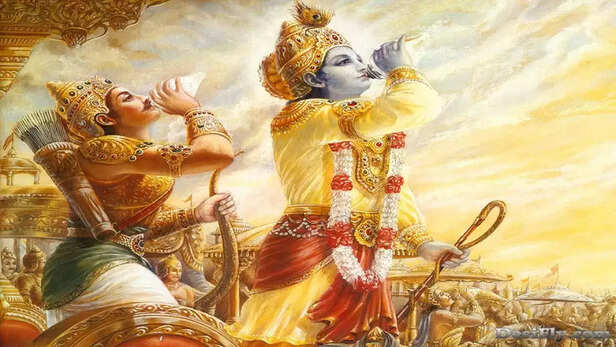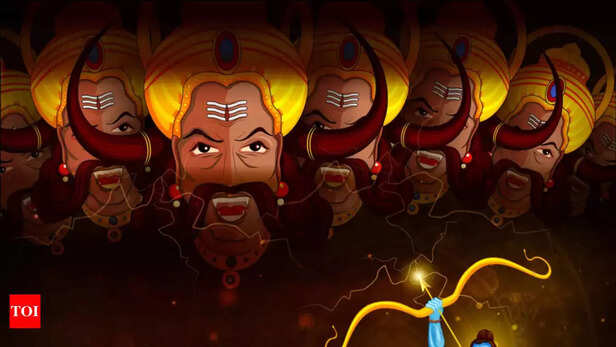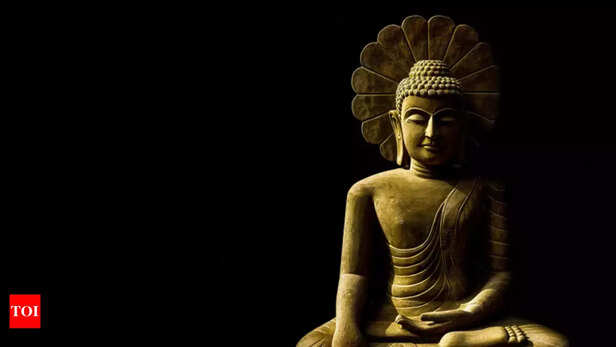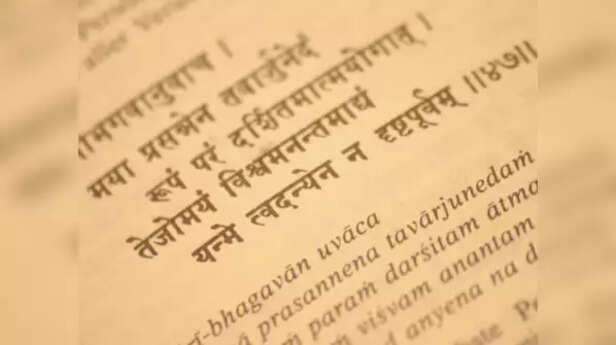Only Desires Take Birth, Others Rest in Peace–Shiva Reveals the Root Cause of Your Existence
Ankit Gupta | Mar 12, 2025, 09:00 IST
Human existence is a paradox of longing and fulfillment, an eternal cycle where the fire of desire keeps burning while everything else—wisdom, detachment, suffering, and even knowledge—eventually fades into the silence of non-existence. This is why only desires take birth while others rest in peace—desire alone refuses to die. It is the first cause of creation and the last tether to existence.
Human existence is a complex interplay of desires, karma, and the eternal cycle of birth and rebirth. The statement—"Only desires take birth while others rest in peace"—captures the profound truth that while all other aspects of human experience may dissolve into stillness, desires remain the driving force behind life itself. The ancient scriptures of India, including the Vedas, Upanishads, Bhagavad Gita, and Buddhist teachings, consistently emphasize that desire (kāma or tṛṣṇā) is the root cause of human birth. Everything else—be it knowledge, renunciation, or suffering—may eventually dissolve, but unfulfilled desires demand continuation, ensuring the soul's return into the cycle of existence.
To truly understand the fundamental cause of our happening, being, and birth, we must explore Indian mythology, where the power of desires has been illustrated in countless stories of gods, demons, sages, and kings. From the curse of Yayati to Buddha’s path to Nirvana, Indian thought has long recognized that desire dictates our destiny, shaping not just individual lives but the cosmic order itself.

In Hindu philosophy, desire is the seed of creation. The Rig Veda (10.129) states in the Nasadiya Sukta, a hymn about the origins of the cosmos:
"In the beginning, there was neither existence nor non-existence. Then desire arose in that One, the primal seed of mind."
This verse suggests that even creation itself is a product of desire. The universe, human life, and all experiences stem from this primal longing. The Upanishads, in their search for higher truth, acknowledge that the world is an illusion (maya), but it is desire that binds us to this illusion.
The Bhagavad Gita (3.37) further reinforces this by calling desire the greatest enemy of wisdom:
"It is desire, it is wrath, born of rajas; it is the great devourer, the great sinner."
Krishna explains to Arjuna that karma (action) is born out of desire, and every birth is a result of past karma. Hence, life itself is a chain reaction set in motion by unfulfilled desires from previous existences.
One of the most striking examples of desire governing existence comes from the Mahabharata, in the story of King Yayati. Yayati, a mighty king, was cursed by his father-in-law, Sage Shukracharya, to premature old age because of his uncontrolled passion. However, he was granted a unique boon: he could exchange his old age with any of his sons willing to take it upon themselves.
His youngest son, Puru, agreed, allowing Yayati to reclaim his youth. However, after thousands of years of indulgence, Yayati realized that desire is never satisfied. He finally renounced worldly pleasures and returned Puru’s youth, retreating into the forest for spiritual salvation.
This story is a direct metaphor for the unquenchable nature of desires. No matter how much one indulges, the craving only multiplies. The more we try to fulfill desires, the deeper we sink into the cycle of birth and rebirth.

Another powerful tale of desire leading to downfall is the story of Ravana in the Ramayana. Ravana, the mighty king of Lanka, was a scholar, warrior, and devotee of Lord Shiva. Yet, his insatiable desire for Sita led to his destruction. Despite having all the riches, wisdom, and power, he was unable to control his longing.
Ravana’s downfall is not merely a moral lesson; it is a cosmic truth about the nature of desire. Even the greatest individuals fall prey to its force. The Ramayana demonstrates that desire, when uncontrolled, leads not only to personal suffering but also to the destruction of entire empires.
While Hindu mythology is filled with tales of how desire leads to birth and suffering, it also offers a path to transcendence. The Upanishads proclaim that liberation (moksha) is achieved when one completely renounces desires.
The Katha Upanishad states:
"When all desires that dwell in the heart are renounced, the mortal becomes immortal and attains Brahman."

Similarly, the Buddha, after years of meditation, concluded that desire is the root of all suffering (dukkha). His Four Noble Truths emphasize that:

Despite its dangers, Indian philosophy does not completely condemn desire. In fact, desire is necessary for creation and progress. The Vedas categorize desires into two types:
However, uncontrolled and selfish desires lead to suffering. The key is to cultivate desires that lead toward higher consciousness rather than entanglement in material illusions.

When a person dies, their body perishes, mind dissolves, and intellect rests. But the latent desires (vasanas) remain. These unfulfilled desires are carried forward, shaping the next life. This is why the only thing that takes birth is desire.
The Brihadaranyaka Upanishad (4.4.6) explains:
"A man is born according to his desires. As his desire, so is his will. As his will, so is his deed. As his deed, so is his destiny."
This profound truth is reflected in everyday life. A child is not born randomly; they inherit past desires that dictate their circumstances, talents, and struggles. Until these desires are either fulfilled or transcended, the cycle of birth and rebirth continues indefinitely.
If only desires take birth while everything else rests in peace, then the ultimate question is: How do we rest in peace? The answer lies in renouncing lower desires and cultivating higher ones. Spirituality does not demand the destruction of all desires but rather their refinement.
Thus, the great sages, renunciates, and enlightened beings of India have always taught:
"Real peace is not in satisfying desires, but in transcending them."
To truly understand the fundamental cause of our happening, being, and birth, we must explore Indian mythology, where the power of desires has been illustrated in countless stories of gods, demons, sages, and kings. From the curse of Yayati to Buddha’s path to Nirvana, Indian thought has long recognized that desire dictates our destiny, shaping not just individual lives but the cosmic order itself.
The Root of Existence: Desire and the Cycle of Birth

Desire fuels the war
In Hindu philosophy, desire is the seed of creation. The Rig Veda (10.129) states in the Nasadiya Sukta, a hymn about the origins of the cosmos:
"In the beginning, there was neither existence nor non-existence. Then desire arose in that One, the primal seed of mind."
This verse suggests that even creation itself is a product of desire. The universe, human life, and all experiences stem from this primal longing. The Upanishads, in their search for higher truth, acknowledge that the world is an illusion (maya), but it is desire that binds us to this illusion.
The Bhagavad Gita (3.37) further reinforces this by calling desire the greatest enemy of wisdom:
"It is desire, it is wrath, born of rajas; it is the great devourer, the great sinner."
Krishna explains to Arjuna that karma (action) is born out of desire, and every birth is a result of past karma. Hence, life itself is a chain reaction set in motion by unfulfilled desires from previous existences.
The Curse of Yayati: The Endless Hunger for Desire
His youngest son, Puru, agreed, allowing Yayati to reclaim his youth. However, after thousands of years of indulgence, Yayati realized that desire is never satisfied. He finally renounced worldly pleasures and returned Puru’s youth, retreating into the forest for spiritual salvation.
This story is a direct metaphor for the unquenchable nature of desires. No matter how much one indulges, the craving only multiplies. The more we try to fulfill desires, the deeper we sink into the cycle of birth and rebirth.
The Fall of Ravana: When Desire Becomes Destruction

Desire was the root cause of Ravana's end End
Another powerful tale of desire leading to downfall is the story of Ravana in the Ramayana. Ravana, the mighty king of Lanka, was a scholar, warrior, and devotee of Lord Shiva. Yet, his insatiable desire for Sita led to his destruction. Despite having all the riches, wisdom, and power, he was unable to control his longing.
Ravana’s downfall is not merely a moral lesson; it is a cosmic truth about the nature of desire. Even the greatest individuals fall prey to its force. The Ramayana demonstrates that desire, when uncontrolled, leads not only to personal suffering but also to the destruction of entire empires.
Desire and Moksha: The Path to Liberation
The Katha Upanishad states:
"When all desires that dwell in the heart are renounced, the mortal becomes immortal and attains Brahman."

Vipassana: The path to detachment from desire
Similarly, the Buddha, after years of meditation, concluded that desire is the root of all suffering (dukkha). His Four Noble Truths emphasize that:
- Life is suffering.
- Suffering arises from desire.
- The cessation of suffering comes from ending desire.
- The path to ending desire is the Eightfold Path.
The Two Faces of Desire: Creation vs. Bondage

Plants do desire sunlight
Despite its dangers, Indian philosophy does not completely condemn desire. In fact, desire is necessary for creation and progress. The Vedas categorize desires into two types:
- Material Desires (Kāmana) – Leading to bondage, suffering, and rebirth.
- Spiritual Desires (Moksha-Kāma) – Leading to liberation and self-realization.
However, uncontrolled and selfish desires lead to suffering. The key is to cultivate desires that lead toward higher consciousness rather than entanglement in material illusions.
The Final Truth: Why Only Desires Take Birth

Sacred verses
When a person dies, their body perishes, mind dissolves, and intellect rests. But the latent desires (vasanas) remain. These unfulfilled desires are carried forward, shaping the next life. This is why the only thing that takes birth is desire.
The Brihadaranyaka Upanishad (4.4.6) explains:
"A man is born according to his desires. As his desire, so is his will. As his will, so is his deed. As his deed, so is his destiny."
This profound truth is reflected in everyday life. A child is not born randomly; they inherit past desires that dictate their circumstances, talents, and struggles. Until these desires are either fulfilled or transcended, the cycle of birth and rebirth continues indefinitely.
The Path to True Peace
- Desire for truth leads to wisdom.
- Desire for service leads to fulfillment.
- Desire for liberation leads to eternal peace.
Thus, the great sages, renunciates, and enlightened beings of India have always taught:
"Real peace is not in satisfying desires, but in transcending them."
